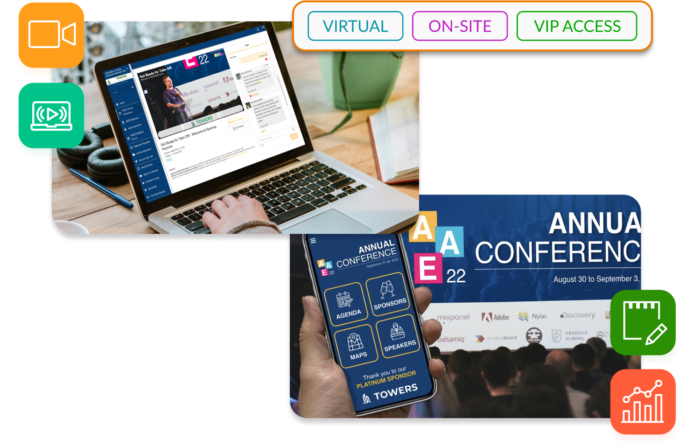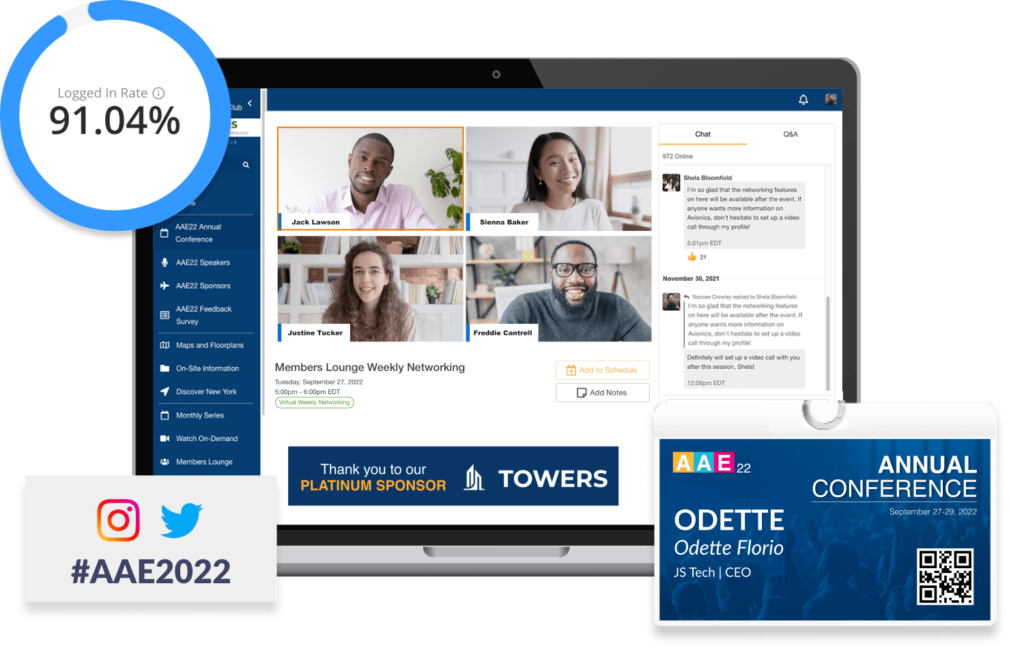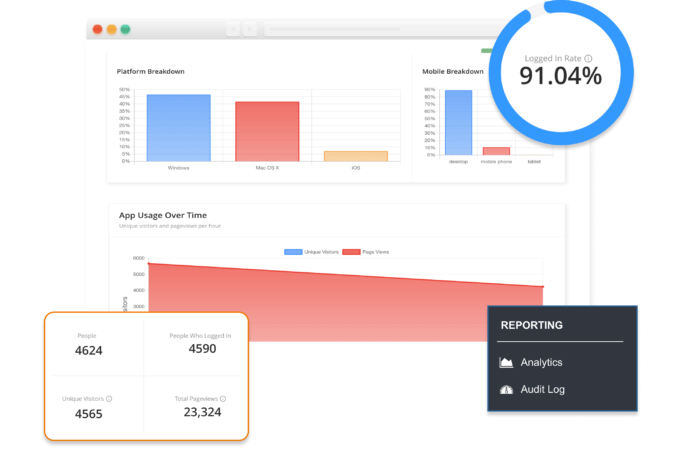Hybrid Events: Setting Goals and Measuring ROI
There’s a lot to consider when planning a hybrid event. You need to think about who your audience is, what speakers you’ll have, how you keep your attendees engaged, and how you’ll host the live and virtual components of the event.
On top of all these logistical considerations, you also need to be sure the outcome of the event is worth the budget you plan to invest.
To maximize your return on investment (ROI), you’ll need to set goals ahead of time, and measure the outcome once it’s done. This is where a hybrid event platform, like ours, can come in handy.
Though every event is unique, there are certain methods anyone can use to set goals and measure ROI. Here are some of the top tips from the event planning experts at EventMobi.
Planning a hybrid event? Download The Complete Hybrid Event Checklist, a free end-to-end template that will ensure your event goes off without a hitch.
Why Hybrid Events Can Bring Greater ROI
You may still be trying to decide between hosting an in-person or hybrid event—but here’s something to consider: Getting a strong return on investment is often much easier when you choose a hybrid option.
With an in-person event, your audience is limited to only those who can travel to your event’s location. If something unexpected arises—like travel restrictions, venue closure, or bad weather—you’ll be able to recoup your losses by offering a virtual program to those who can’t attend.

On top of that, a hybrid event allows you to reach a larger audience—you can extend invitations to anyone who has an internet connection, no matter where they are. You’ll still be able to get mileage out of your in-person attendance, without restricting your audience to only people who can be there in-person.
Setting your Big Hybrid Event Goals
The goals you set for your event hybrid will largely depend on your organization and the purpose behind your event. So to get started, sit down with your planning team and consider the big question:
What do we want to get out of this event when it’s over?
Here are some potential big-picture goals you can consider:
Overall attendance: If your event is about promoting your organization, growing your brand footprint, or reaching potential new customers, then high attendance numbers may be the big goal you’re going for. In such cases, the more people who attend your event, the more successful you will be in spreading the word about your company.

Attendee engagement: Beyond just selling tickets to your event, you may want to set goals around how engaged your attendees are. For example, you may put engagement at the top of your list of goals if the primary purpose of your event is to provide opportunities for networking, interaction, and collaboration.
Financial earnings: You can use events to grow the revenue of your business. In this case, you’ll still want to measure the number of tickets sold, as well as things like revenue earned from sponsors or product purchases made during and after the event. You’ll also need to carefully monitor the expenditure of putting together the event, so you can subtract these from the income generated for a true picture of ROI.
Attendee satisfaction: This goal is particularly useful if you plan to run several events, as satisfied attendees are more likely to purchase tickets to your next event or spread word to others in their network.
Education and assets: Perhaps the primary goal of your event is to educate your audience about a specific subject, or to create valuable assets for your business. If so, your goals should include the evergreen content and marketing assets you get as a result of hosting your event.
Setting Specific KPIs for Your Hybrid Event
Once you know what the big goals are for your event, it’s time to drill down and set some key performance indicators (KPIs), which you’ll be able to measure during and after the event.
Once again, your KPIs will vary based on what your larger goals are. For example, if you are mostly focused on generating revenue from the event, then you may want to set a KPI for the specific number of tickets you need to sell to earn the amount you want, based on the cost of each ticket.
If your goals are more focused on reach, then you can focus less on the cost point of each ticket, and more on the overall audience number. This is why so many businesses opt for hybrid events rather than just in-person events. With a hybrid event, you can vastly expand your audience numbers by offering an enriching event experience for people who can’t attend in-person.
Planning a hybrid event? Steal this 9-step strategy for your hybrid event’s success!
If your big goals are centered on engagement, then you can set your KPIs around how many people attend your various sessions or participate in things like networking opportunities, 1:1 meetings, live polls, surveys, and other interactive aspects of the event.
For events that are focused on education, you can plan your event around the number of assets you’ll have when the hybrid conference or meeting is over. Those using the EventMobi hybrid events platform can easily transform their live sessions into an evergreen library of content to be used in marketing materials once the live conference is over.
How to Measure the ROI of Your Event
Setting goals and KPIs for your event is only half the equation—you also need to make sure you have systems in place to measure the success of the event once it’s over. Not only will this help you determine how successful your event was but you’ll also be able to use the information you glean to plan and improve any future events you host.

EventMobi’s hybrid event analytics makes it easy to analyze your KPIs, all through the same platform you use to manage your attendees and drive engagement.
The platform makes it easy to track how many tickets you sold and how many attendees actually came to the event (in-person or online), but EventMobi’s intelligent analytics go much deeper than that.
EventMobi allows you to:
Analyze individual sessions to determine which speakers or activities were most popular, and which ones had lower attendance.
Track data in real time so you can monitor your goals during the event, and make adjustments to increase ROI even as the event is ongoing.
Measure engagement activities like 1:1 networking, participation in live polls and quizzes, and sponsorship visits among both virtual and in-person attendees at your hybrid event.
Lead generation and sponsor engagement, showing you exactly how many people visited sponsors, built new connections, or made purchases during the event.
Monitor content engagement, allowing you to see how many people download or watch the various assets you create, during and after the event.
With EventMobi’s event platform, not only will you be able to use these metrics to inform your own success and future events, but you’ll also be able to present your findings to sponsors and other stakeholders, so they can see how much of a return on investment they received as a result of participating in your event.
Final Thoughts: Making the Most of a Hybrid Event
There’s more than one way to host a successful hybrid event.
With a bit of planning, you can go into your event with specific goals in mind. And with an hybrid event platform like EventMobi, it’s easy to measure just how successful you were when all is said and done.
To learn more about how EventMobi can help you host a successful hybrid event, book a free demo with one of our event specialists.